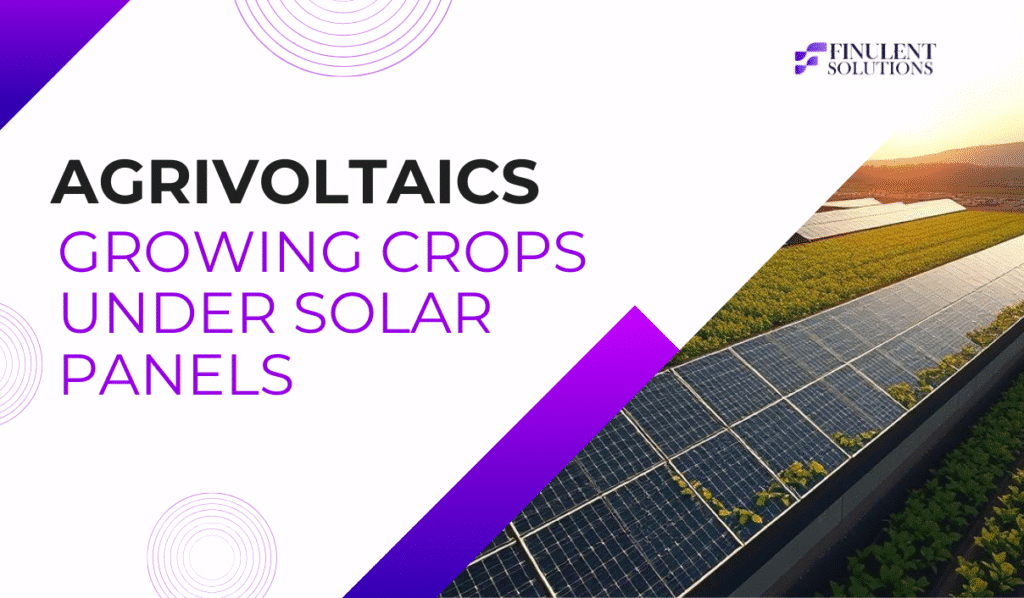Introduction
Agrivoltaics – the combination of solar energy generation with agriculture – is increasing in the United States and gaining traction. As of January 2025, there are over 500 projects for agrivoltaics in the United States. Agrivoltaics, also known as Dual-use solar farms, can assist with achieving one’s renewable energy target without forfeiting the productivity and sustainability of farmland because a dual-use solar farm acts as a solar collector, collecting energy from the sun, as well as an agricultural collecting of crops at the same time.
What Is Agrivoltaics?
Agrivoltaics (also called agrisolar or dual-use solar) is the simultaneous use of agricultural land for solar generation and other on-site agricultural operations (i.e., crop production, grazing livestock or establishing pollinator habitats). Agrivoltaics describes hybrid land use, when energy-producing technology is combined with another land use for food and ecosystem services, which increases the efficiency of land use.
A National Snapshot as of January 2025
- Over 500 active agrivoltaic sites in the US account for approximately 9 GW of solar capacity.
- According to the National Renewable Energy Laboratory (NREL), by the end of 2024, there were records indicating agrivoltaic systems had grown to nearly 600 sites, covering 60,000 acres and delivering 10 GW of solar capacity.
- The main use of Agrivoltaics is grazing and pollinator habitat (over 400 sites), then livestock grazing (Around 200 sites), then smaller amounts of crop production (Around 35 sites), and then solar greenhouses (3 sites).
The Importance of Agrivoltaics
Land Efficiency and Dual Revenue
Agrivoltaics facilitates dual land use. Given a hectare, a farmer may simultaneously produce substantial crop yields and solar power—often obtaining efficiencies that greatly exceed farming or solar alone. Plus, the farmer benefits from additional income—a solar lease payment and cash from crop production.
Benefits
- Managing The Microclimate: Solar panels provide shaded areas which reduce heat stress for crops, reduce evaporation, conserve irrigation water, and mitigate impacts of severe weather on crops.
- Enhanced Solar Output: Plants modify the local environment through evaporative cooling, which lowers temperature and increases the solar output potential of the individual system.
- Biodiversity and Soil Health: The vegetative ecosystem under the solar panel could also be exploited to support pollinators.
Research and Innovation Support
The University projects show that leafy greens, for example, cherry tomatoes, kale and Swiss chard, can have a yield of 90-95% even when panel shading occurs. The research continues by residually working out the best panel designs, including elevated panel systems for crop access and solar cooling.
Successful Agrivoltaic Projects
- Jack’s Solar Garden (Colorado): The successful agrivoltaic cropping site in Colorado demonstrates that vegetables can grow underneath a solar array.
- University of Massachusetts, South Deerfield: Studies have shown that crops can thrive underneath the elevated solar arrays when the earlier spacing is done properly.
- Maple Ridge Meats (Vermont) & University of Minnesota, Morris: Animals grazing underneath the solar array creates a win-win system for cooler grazing zones and having to manage less vegetation.
- Rutgers University (New Jersey): Hosting multiple agrivoltaic demonstration farms to test and determine the worth of various dual-use systems with a variety of crops and livestock, as part of a statewide Agrivoltaics Program with DOE as a partner.
Obstacles to Expansion
- Higher upfront costs: Agrivoltaic systems have an added complexity of design and components (e.g., taller mounts, different installation), which contributes to increased costs.
- Reduced yield on some crops: Shade-tolerant crops perform better, but both large-scale cornfields and mechanised operations disrupt traditional farming logistics.
- A gap in the policy and incentives: Specific state incentives (e.g., Massachusetts and New Jersey provide togelates that include commercial pilot projects) and limited federal policies create a barrier for scalable impact.
- Added complexity in operations: Using dual-use systems requires specific skills that introduce new maintenance and an agreement between the developer and farmer.
The Future of Agrivoltaics
Agrivoltaics is developing into an increasingly viable practice for sustainable, multifunctional use of agricultural land. Published peer-reviewed research demonstrates that high crop yield can be maintained from agrivoltaics alongside the generation of renewable energy; therefore, there is a great opportunity for further expansion. Investments in research, coherent policy instruments, and farmer-developer partnerships/applications will all be needed to maximise the potential of this innovative way of resilient, land-efficient agricultural systems.

